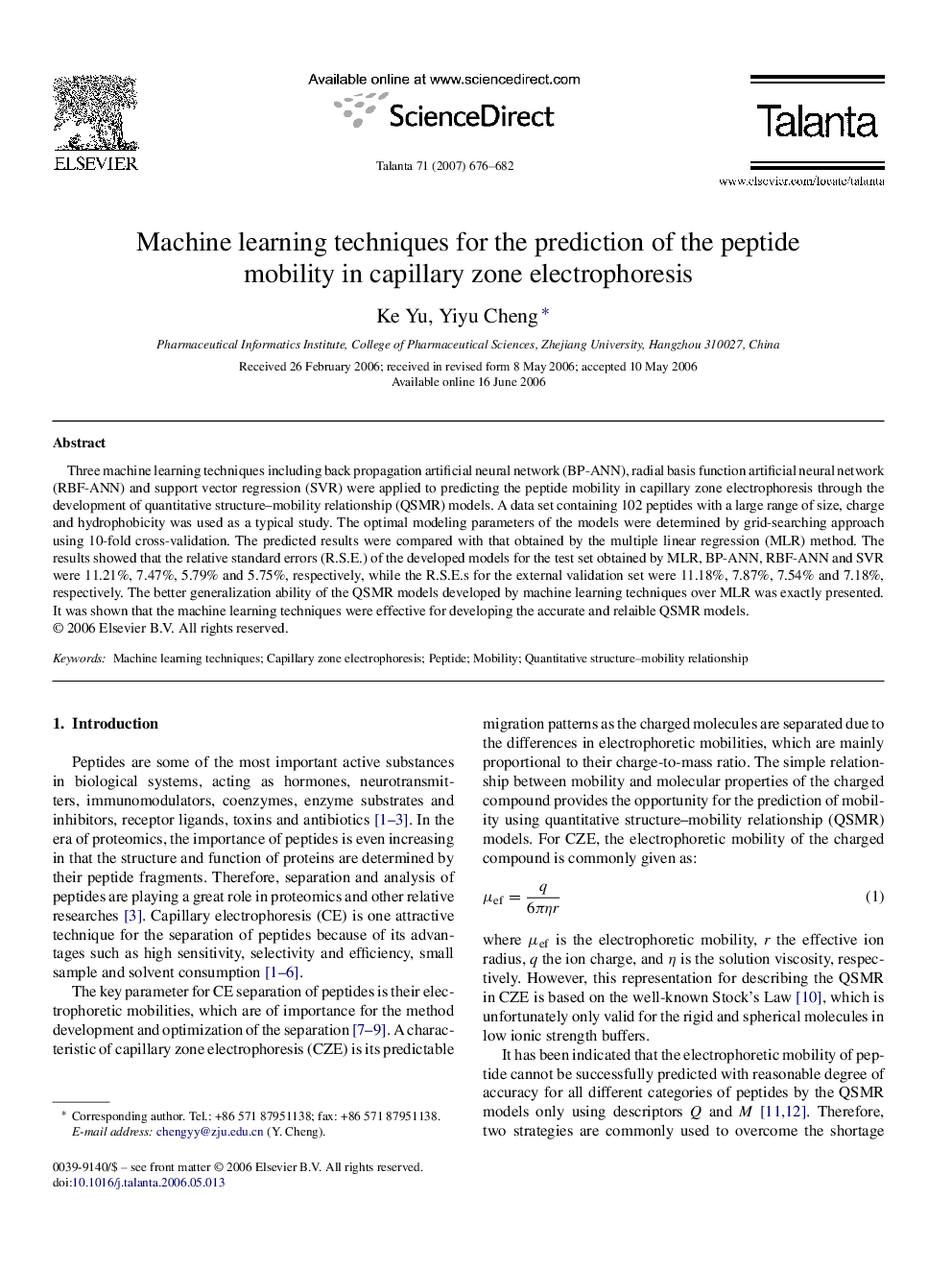| کد مقاله | کد نشریه | سال انتشار | مقاله انگلیسی | نسخه تمام متن |
|---|---|---|---|---|
| 1244238 | 969683 | 2007 | 7 صفحه PDF | دانلود رایگان |

Three machine learning techniques including back propagation artificial neural network (BP-ANN), radial basis function artificial neural network (RBF-ANN) and support vector regression (SVR) were applied to predicting the peptide mobility in capillary zone electrophoresis through the development of quantitative structure–mobility relationship (QSMR) models. A data set containing 102 peptides with a large range of size, charge and hydrophobicity was used as a typical study. The optimal modeling parameters of the models were determined by grid-searching approach using 10-fold cross-validation. The predicted results were compared with that obtained by the multiple linear regression (MLR) method. The results showed that the relative standard errors (R.S.E.) of the developed models for the test set obtained by MLR, BP-ANN, RBF-ANN and SVR were 11.21%, 7.47%, 5.79% and 5.75%, respectively, while the R.S.E.s for the external validation set were 11.18%, 7.87%, 7.54% and 7.18%, respectively. The better generalization ability of the QSMR models developed by machine learning techniques over MLR was exactly presented. It was shown that the machine learning techniques were effective for developing the accurate and relaible QSMR models.
Journal: Talanta - Volume 71, Issue 2, 15 February 2007, Pages 676–682